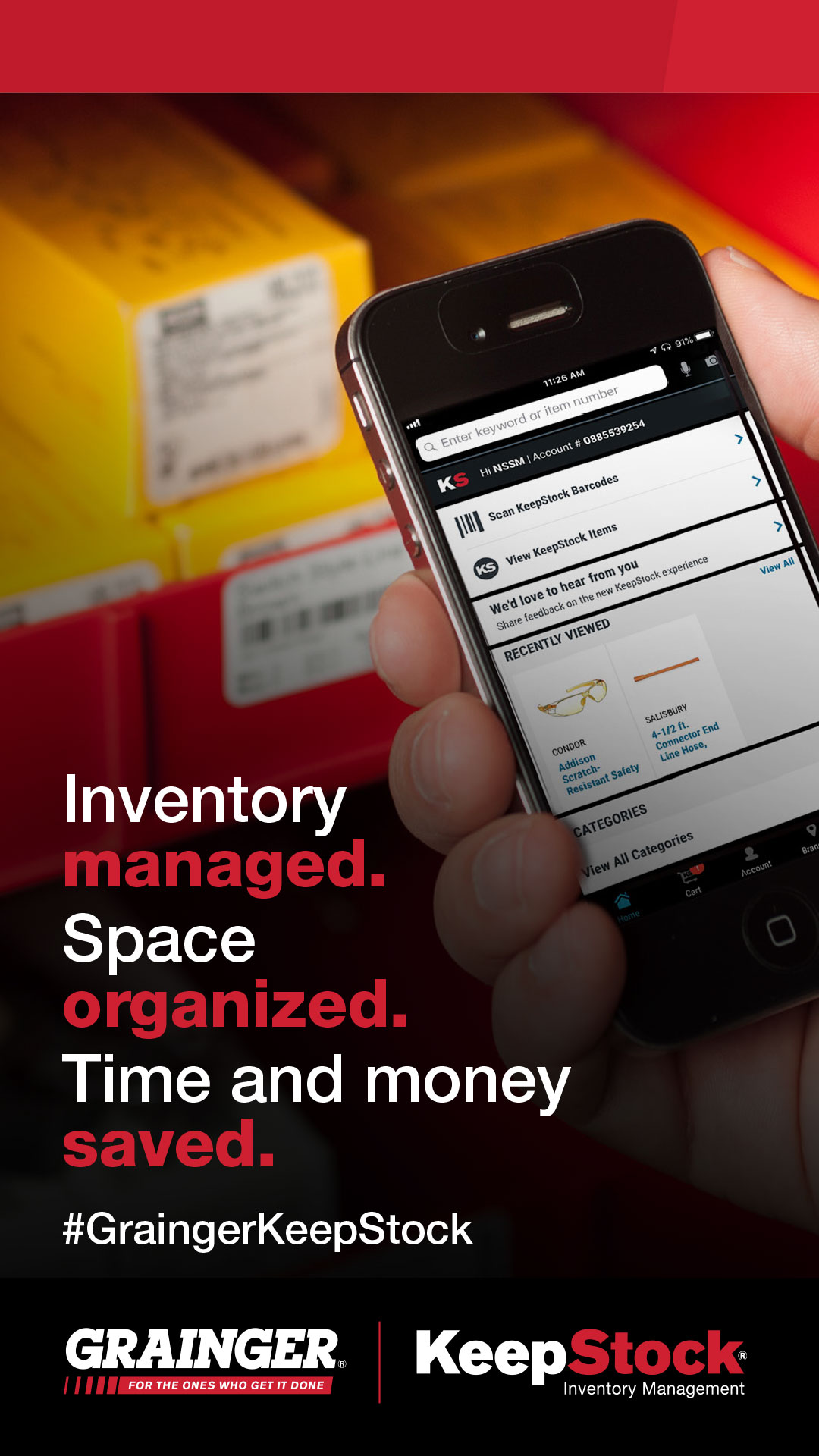

Storage for Your Storage: Organizational Best Practices
By Grainger Editorial Staff 9/23/21


Having everything you need on hand is important, but it can also be overwhelming. You need space for everything you need and a way to find it quickly. You also need to find that balance between good organization and overdoing it. Just like with too many cooks in the kitchen, over-organizing can be a hindrance instead of a help. It is important to find the right kind of storage system for your specific needs.
A Clean Slate
When evaluating the best storage options for your business, you first have to know what it is you are storing. Go through your items and make sure that everything you are keeping on hand is actually something you need. If it isn’t essential, get rid of it; it is just taking up valuable space that could be used for something you really do need.
Shelving
What kind of shelving are you using for your storage? Does it fit your needs? If you are having an issue with finding a good method to controlling your storage, what you’re putting it on might be an issue. Shelves seem like a simple thing, but the wrong type or size shelving may cause unnecessary issues. You need shelves that accommodate what you have on hand, and not one size fits all.
Certainly, if you are in a warehouse, you will need pallet racks. These are special types of shelving that are designed to carry the heavy loads required for warehouse storage. If you are storing larger or heavier item, but aren’t using pallets, bulk storage racks might be a good option. These come with and without decking (the wire or boards that make the shelf) to accommodate bins.
Bin Storage
Speaking of bins, utilizing storage bins and containers can transform your storage space from a cluttered mess into a streamlined picking system. Loose items—such as hardware, office supplies, rolls of tapes and wire and small tools—should always be placed in bins. This isn’t just good organization, but good safety practice as well. Small, uncontained items not kept in bins can easily fall in walking paths or cause clutter that may block things like safety equipment or exits. Therefore, always keep your smaller items in their proper containers.
Bins come in many different shapes and sizes to fit several different needs. Some bins are designed to be nested—that is, to be able to stack one on top of the other without needing lids. Stacking your bins vertically allows you to make the most of your storage space. There are also shelf bins, which sit on the shelf open, allowing for easy access. These are a good choice for the smaller items that you use regularly and need immediate access to.
Other types of bins include the hanging bin, which is designed for use with a hanging shelf. These are sloped shelves that allow the bins to sit on an angle. This way, the contents are easy to see and access. Most types of hanging bin shelf systems are designed so the bin may be removed as needed, and returned when finished.
Closed Locker Storage
While you want most of your inventory on hand and available to the workers who need them, some items need to be kept under lock and key. You may have certain chemicals at your plant which need to be stored separately from everything—or everyone else. Or perhaps you keep specialty tools or items that only certain employees are certified to use. In any case, sometimes closed storage is the right option.
Lockers can be for large items, bulk items, or smaller items, depending on your needs. Cell phone storage lockers are a good idea for facilities where employees may not keep a personal cell phone on their person during the work day. Most lockers also come with various visibility options, depending on whether you would like to see the contents or have them concealed.
Labeling
When thinking about storage, do not overlook labeling. Even the best storage container system can fail if you do not know what is inside any certain container, or on any one shelf. If you are organizing a storeroom or warehouse, be sure to include all the pertinent information you need to find what you are looking for quickly. SKUs, product names and descriptions, and even pictures can save time and effort when locating an item.
Storage for Your Storage
The best way to care for the things you keep on hand is to store them in a safe, organized, easy-to-understand fashion. This can protect from loss, from clutter and save time while selecting items. Most of all, it helps you keep track what you have, so you have a better idea of what you need.
Sources:
http://smallbusiness.chron.com/organize-storage-inventory-warehouse-13246.html
http://phswire.com/warehouse-organization/7-ways-to-organize-your-warehouse
http://www.houzz.com/ideabooks/4177801/list/12-tips-for-supremely-organized-basement-storage
http://homeguides.sfgate.com/organize-storage-rooms-54201.html
![]()
The information contained in this article is intended for general information purposes only and is based on information available as of the initial date of publication. No representation is made that the information or references are complete or remain current. This article is not a substitute for review of current applicable government regulations, industry standards, or other standards specific to your business and/or activities and should not be construed as legal advice or opinion. Readers with specific questions should refer to the applicable standards or consult with an attorney.







